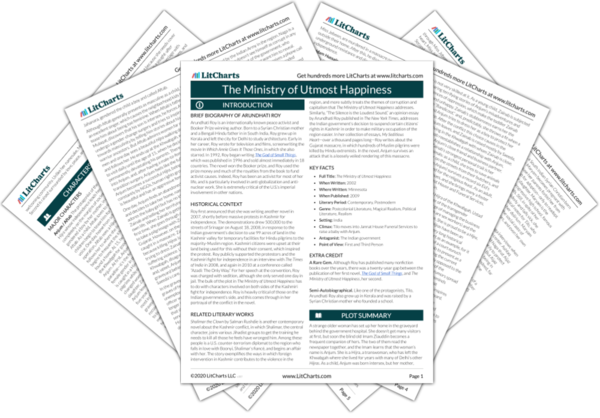The revelation that Anjum’s
Hijra identity has protected her from death adds another layer of complexity to Roy’s exploration of gender and privilege.
Hijras are both looked down upon and feared, and in this way Anjum’s identity as a marginalized person is, in some ways, a social position of power and protection. The fact that the Hindu mobs are willing to murder thousands and yet fear acquiring bad luck for killing one
Hijra is blatantly ironic. It demonstrates the extent to which religious extremism has prevented the mob from recognizing the humanity of their Muslim compatriots. Because their religious beliefs teach them that it is bad luck to kill
Hijras, they don’t; and yet because their religious and political leaders either implicitly or explicitly condone the murder of Muslim citizens, they do.


